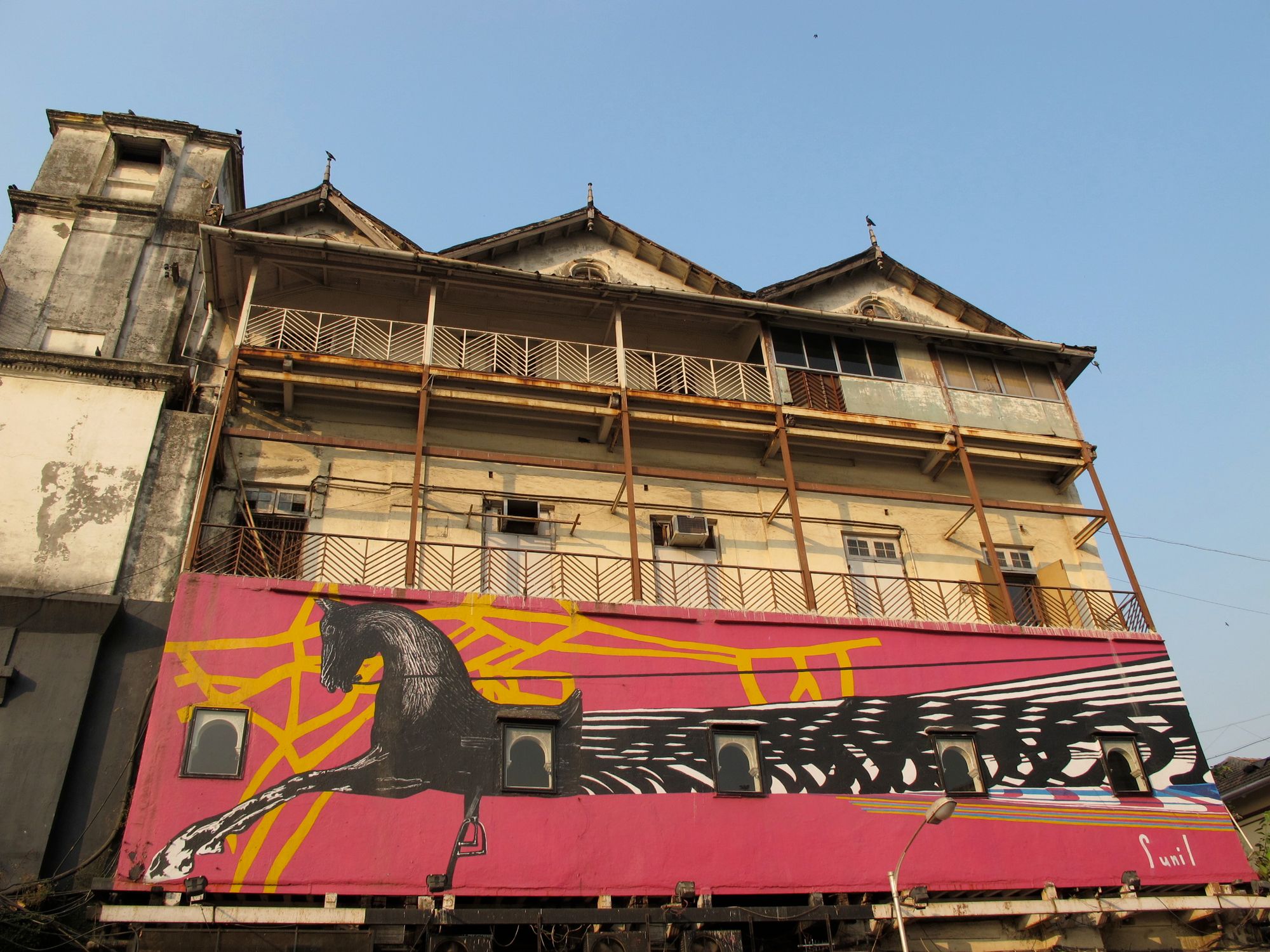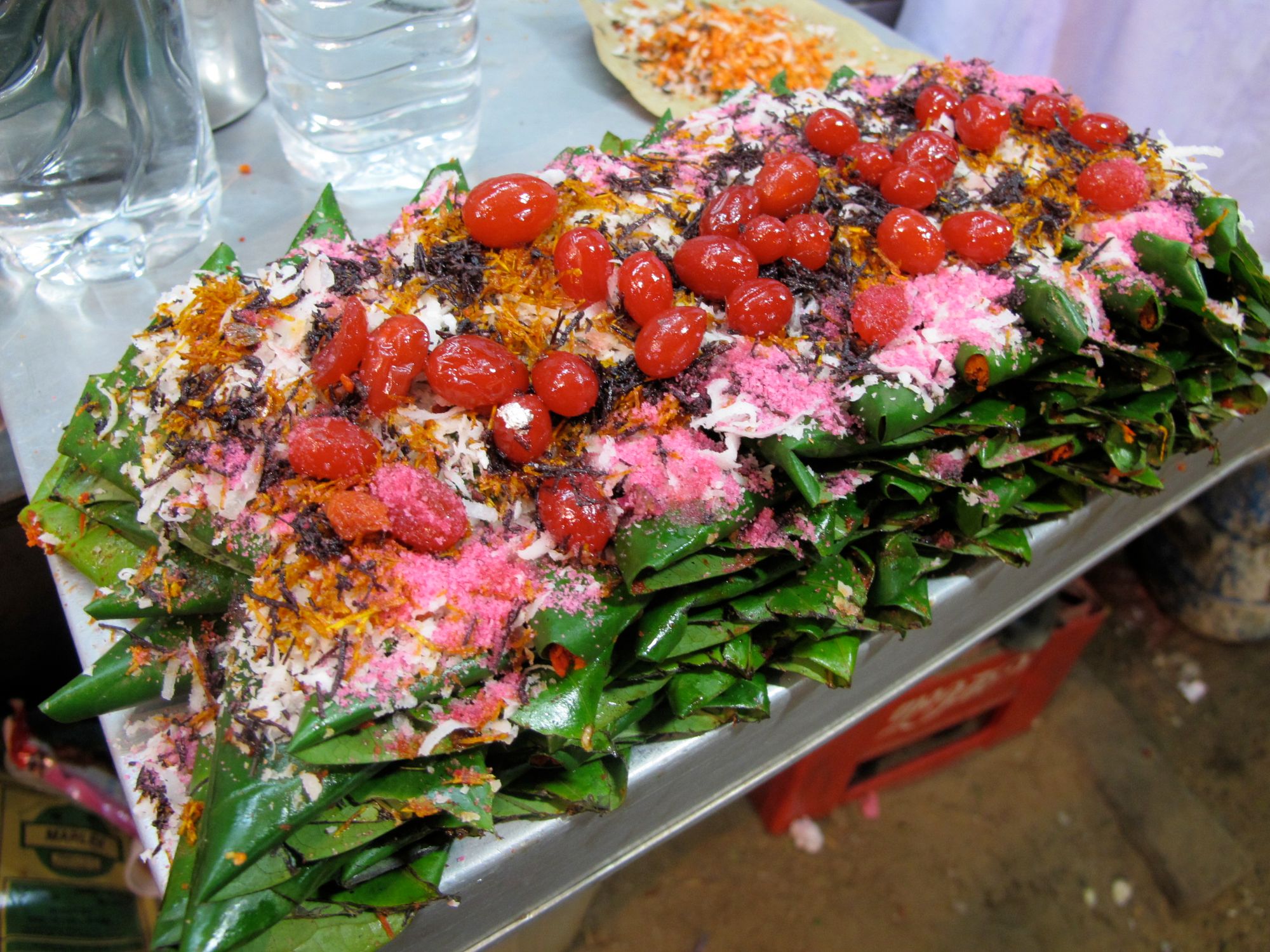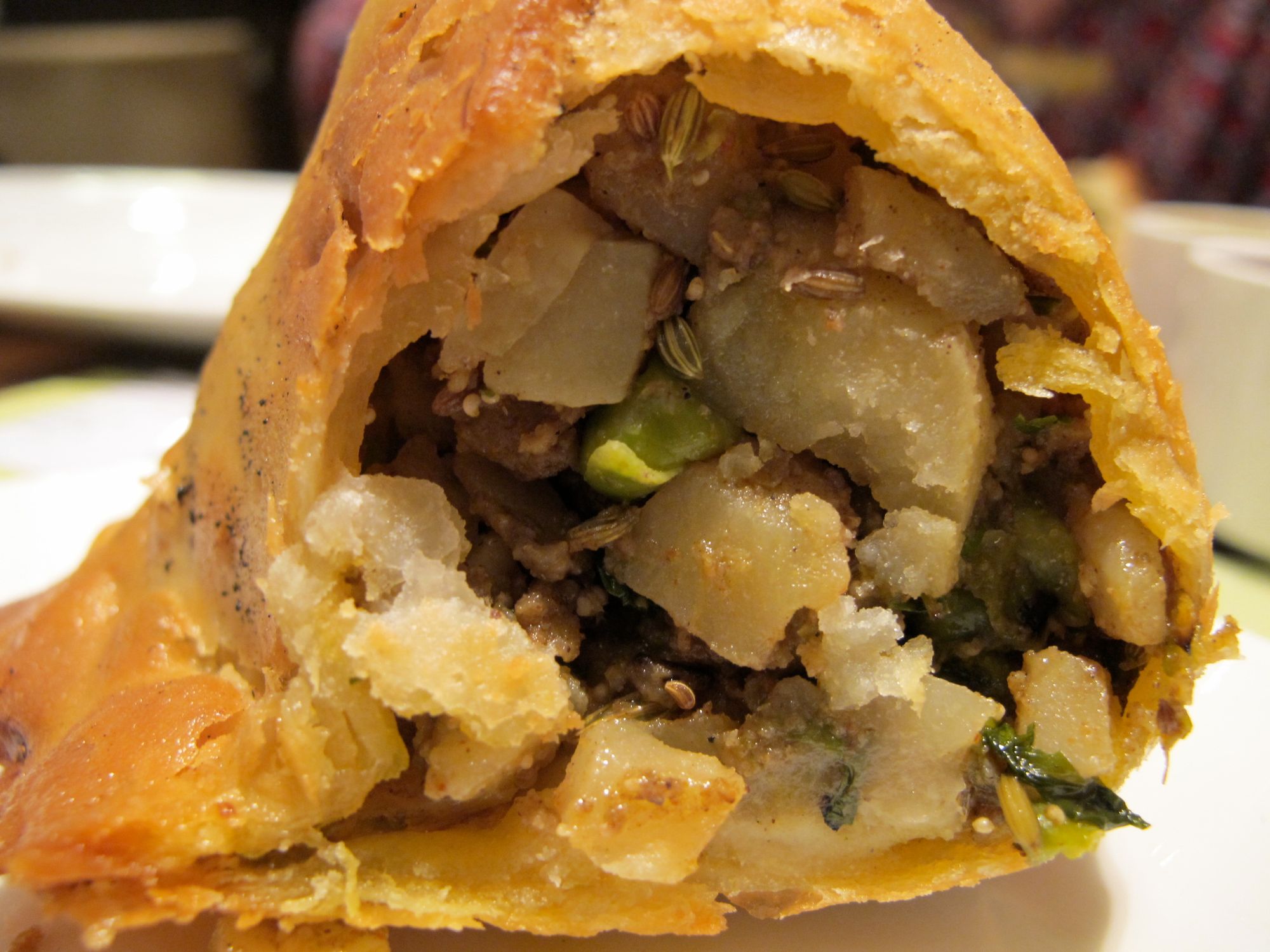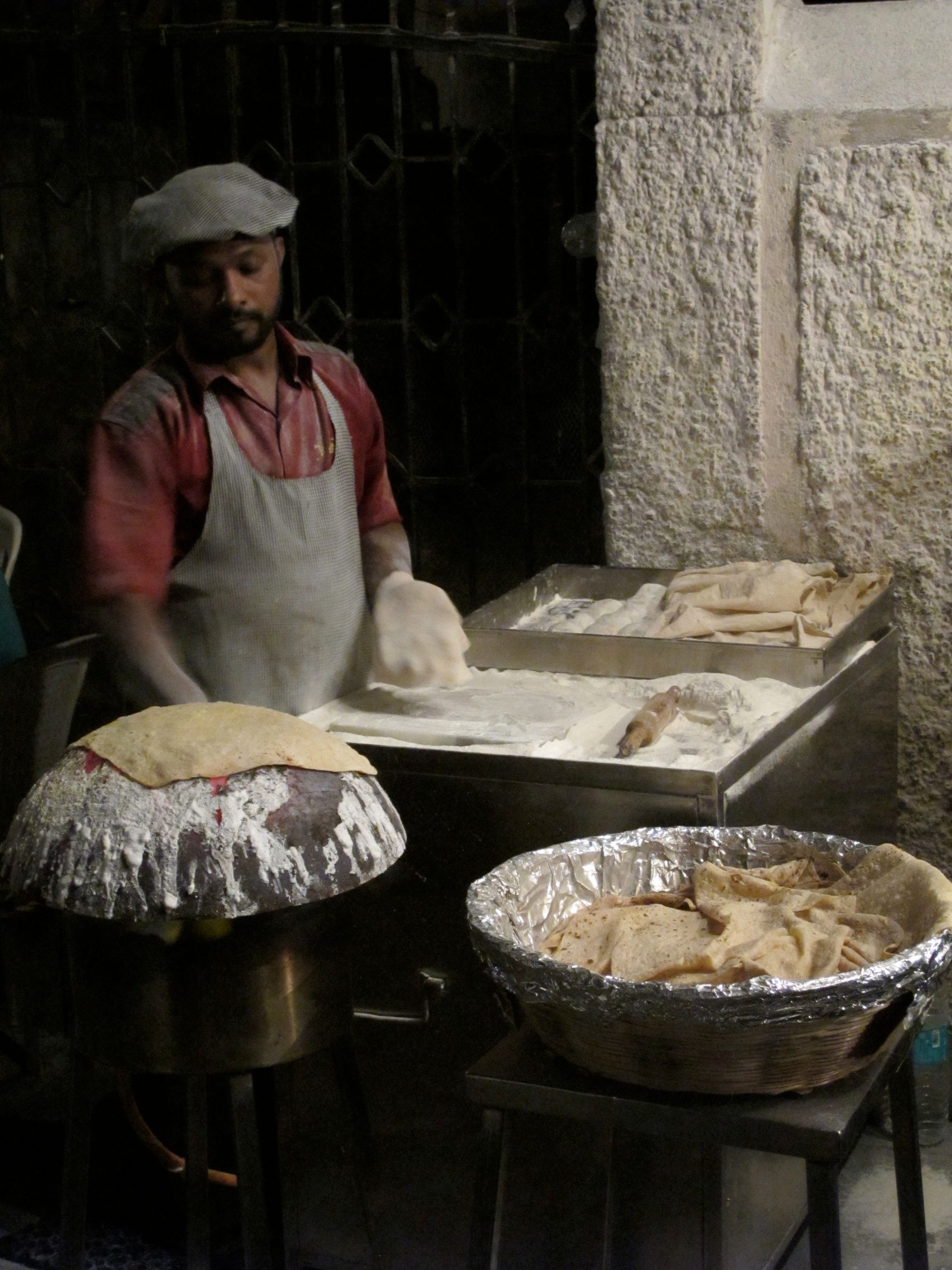As my plane started its descent into Mumbai, some twenty-five hours after I had left San Francisco, I started feeling a spike of nervous anticipation about the chaos that was looming in the city below, starting with the end of safe drinking water. Then again, it’s definitely a bit jarring to go from the highly sanitized world of business class on a Lufthansa flight (I cashed in all my miles for business class, best decision ever), to landing in one of the largest cities in the world (18 million citizens) at 1:30am.
After waiting for my sister’s flight to land a couple hours later, we both got into our pre-paid cab and rode to the hotel we had reserved before our trip (most flights from the U.S./Europe get into India after midnight, so you want to know where you’re sleeping your first night). A couple airport tips: get your first bundle of rupees from the sole ATM (if it’s working). And in case it’s not, like we encountered, just change a little money at the exchange counters that are each hawking their services—but a weekly trip to the ATM is the best way to get rupees. Book your prepaid taxi voucher at the indoor stand before you walk outside, because there’s no getting back in past security. Out the door, it’s a slew of people and offers and cars—the voucher helped us stride past all the inquiries of “taxi, ma’am?” to our designated cab.

At first we thought our taxi driver was a madman, but no, we soon learned all drivers in India are mad. They don’t stay in their lane, ever (two-lane roads accommodate four cars abreast, with a few motorcycles and a bus thrown in for good measure). They pass on blind turns, they weave, they speed up and then slam on the brakes, and the horn is meant to be used at all times so everyone on the road knows where you are. The streets are filled with the swells of honks, and you are mere inches from the cars next to you at all times. It took me about a week to get used to the vehicular mayhem—I just had to surrender. And for the three weeks I was in India, I didn’t see a single accident, so that’s hopeful.
Nothing prepared me for the surreal arrival into Mumbai. The streets were full of all kinds of activity at 3:30am: carts being unloaded, construction, workmen in the streets… Dogs, dirt, burning piles of garbage lined the road. On the way into the city, you will eventually pass by the slums. I will never forget the realization that the shadowy figures on the side of the street were actually sleeping bodies, with anywhere from five to fifteen people all lined up next to each other, just their bare feet peeking out from under their sheet, if they even had a sheet. Little feet, big feet, medium feet. My heart sank. What were we getting into? The magnitude of the city’s poverty was a hard thing to comprehend, one of the first of many indelible impressions.
Our hotel was in the Colaba District, an area that is close to some major landmarks and has a number of hotels, restaurants, and therefore tourists, so it always has something going on. We happily discovered the next day that our hotel, the Hotel Diplomat, flanked the back side of the Taj Mahal Palace, so it was an easy landmark.
January is the perfect time to be in Mumbai: the weather is hot but not unbearably so, and it’s before the monsoon season kicks in. January is also considered the high season, so accommodations are a bit harder to find, and you’ll pay more. Our hotel was fine—not what I’d call a looker, but it was a decent deal for $85 or so per night. The staff was nice, our double room was clean enough, the location was ideal, and it was secure—really, all we needed. We were traveling on a budget, and fortunately our rooms or coconut huts in other cities on the rest of the trip were more in the $20 range.
Mumbai. I fell in love with this city, and my sister did too. The first day was a bit overwhelming, you’re trying to figure out a lot of things. How do the cabs work? (It was never easy: either you decided the price with the driver first, or you made the driver use the meter and then you’d have to decipher the fare chart, or the meter was broken so you’d have to haggle a price.) And how safe is it? People are everywhere. Is someone going to cut my purse strap and run away with my bag like I heard it could happen? (I loathe money belts, but we wore them while we were in Mumbai.) What about the beggars? What’s a dangerous street? What’s a safe street?

You’re trying to pay attention, but my head was swiveling around like a barn owl, there was so much to look at. I felt like I was on drugs. You see everything on the street: men getting shaved, playing cards, people praying, eating. Heck, we even saw some ear candling, no joke. And there are so many people selling everything from power cords to peacock feather fans to CDs to artwork to jewelry.
I had no idea how much people were going to stare at us. I thought Westerners were pretty common, but it ends up we were quite the sideshow. Our every move was watched, let me tell you.
Indians are some of the friendliest and most curious people I’ve ever met. Without fail, we would be asked daily: “Where are you from? What is your good name? Where are you staying? Do you like India?” I never got tired of the battery of questions, it was endearing to the end. I loved it; people would just march right up to us and ask.
People look you in the eye. They stare. We also got a lot of smiles. I can’t believe how many quick connections I’d feel throughout the day. And it’s quite fantastic that you actually get to speak English with most folks—it felt like a luxury to be able to communicate in a place that was so far from home.
Our first mission was to get some Indian clothes. It was hot and humid, and Indian cotton was going to be the way to go. Besides the little flashes of midriff you’ll see of women in their saris, the majority of women dress very modestly, with covered arms and legs, rarely in tank tops or short skirts. Sure, we saw some foreign women in skimpy tops, but we didn’t want to draw any more attention to ourselves, nor did we want to offend—I purposefully left all of my American sundresses at home. Our favorite store was Fabindia, where we stocked up on brightly colored cotton-silk kurta tops (loose tunics that were either waist or mid-thigh in length, with three-quarter sleeves) and cotton pajama pants.

The streets smelled delicious, heavy with sandalwood, cooking food, fruit, cologne, spices. The amount of street food was staggering. It was everywhere. It was a bit of a shame to be in Mumbai first, because we really didn’t know what we could or couldn’t eat. It’s hard, because you don’t want to get taken out on your first few days in. Seriously. We were told to stay away from anything with water, so the sugar cane stands on so many corners were out, because you could see them cut the freshly pressed juice with water. Damn. Those little bundles of paan? Yeah, the leaves were soaking in water, so those were out. We were also told to beware of anything with chutney, because those were often cut with water. Well, that wiped out more than half of what we saw. It was torture. We joked that India was a country of culinary landmines—you never knew what was going to cause an explosion.

Fortunately we discovered Swati Snacks (248 Karai Estate, Tardeo Rd, Tardeo, 91-22/249-209-94), a slick but casual place that specializes in chaat/street food, but makes everything “hygienically.” I would have eaten at that place every day, what a gem: we got to try the classic Mumbai snack of vada pav (imagine a fried and spiced potato slider on a soft and buttery bun with the texture of a Parker House roll) plus pav bhaji, lovely panki, a lacy pancake steamed in banana leaf, pani puri, and yay, at last, we got to try sugar cane juice. The place was a goldmine of flavors and super cheap. A bit hard to find, but it was pretty close to the Chowpatty Beach street vendors. And our entire meal was less than 500R (about $10).
Speaking of Chowpatty, you have to go by at night and check out all the pav bhaji hawkers yelling “pow bah-jeeeee!” (Here’s a brief video of the setup.) Had we not been totally stuffed from dinner the night we came by, I would have felt safe eating pav bhaji there—it smelled and looked amazing. All kinds of couples and families were sitting on the outdoor mats, and it was quite the entertaining scene.
One of my favorite moments throughout the day was the random appearance of a chai walla. You’ll be hanging out, or walking along the street, or just waking up on the train, and you suddenly hear “chai! chai! chai!” Music to my ears every time since I had subbed out coffee for tea this trip. (When in India…) They carry these metal containers with a handle on top and a little burner underneath, keeping the hot milky tea within piping hot. The chai walla will hand you a tiny paper cup full of spicy tea, and it was always a surprise, like, was this one going to be super sweet? Or kind of weak? Cardamom-loaded? A great little pick-me-up numerous times throughout the day for 20 cents, if that. (Tip: in a cafe or restaurant, be sure to ask for masala chai if you want the spiced kind, otherwise you just get tea and milk.)

Fortunately I got some great recommendations from friends on where to eat, and I gotta hand it to the Frommer’s India guide, they had some spot-on dining recos throughout our entire trip. One was Cream Centre (Fulchand Niwas 25/B, Chowpatty, 91-22-2367-9222), an overly air-conditioned place near Chowpatty Beach that blew our minds with the best samosa we’ve ever had, loaded with perfectly seasoned potato and fresh curry leaves, and their specialty: the fluffy and multi-layered channa bhatura, a puffed-up globe of fried dough deliciousness, served with spiced chickpeas and lentils. A side dish of bright carrots with mustard oil and chili was revelatory. We also noticed how onion and lime were the standard condiments—it was almost always the first thing placed on the dining table in Mumbai.
Mahesh Lunch Home (8D Cawasji Patel Rd., Fort, 91-22-2287-0938) was another great reco, a Mangalorean restaurant that specialized in super-fresh seafood. We adored the tandoori pomfret (so juicy and spicy), and the vegetable gassi, a coconut-based curry. We went for lunch, so we didn’t totally gorge (but the live crab was tempting). The staff was really engaging and kind. Was a bit more on the “pricy” side, but was still under $40 for two.

Probably one of the coolest experiences was at Bademiya (Tulloch Rd., Apollo Bunder, 91-99-6711-4183), a smoky street stand that specializes in kebabs and has a cult status in Mumbai. (It’s located close to the Taj.) Throngs of people and cars were on the street, waiting for a card table or a chair that would open up on the sidewalk, or a few got their order to go, or were eating off the hood of their car. As you wait, just watch the entire scene (here’s a quick video I took), from the guys taking your order in the street, to the fleet of servers expediting food to the tables, to the captivating rumali roti maker making roti so quickly I can’t even imagine how many years he’s been doing it (here’s another video I took), and in case you’re as mesmerized watching him as I was, here’s another, just watch until the end). We ordered the baida roti, an eggy fritatta-like filling with spiced chicken, plus onion and ginger, all sandwiched in the thin rumali roti, and then pressed. It was probably one of the tastiest things I have ever eaten. I didn’t even take a picture of it—as soon as my sister and I unwrapped it, we attacked it like jackals.
We also had to try a Frankie from Tibb’s Frankie (we had ours on the Colaba Causeway), a classic Mumbai street treat that is like their version of a burrito (every culture has their burrito, I am convinced). The tender roti wrap (I ordered mutton/lamb) featured a tangy vinegar sauce with onions. Loved. And it was less than $1.
We were also fans of the included breakfast at the restaurant Indus in our hotel, the Hotel Diplomat—every day it changed, from alu paratha, to pakoras, to our favorite concoction, a thin omelet with chili and onion that we would douse with sambar. We had our first lunch there (including stuffed paneer) and also ordered room service for dinner on our first night since we were exhausted—the chicken bhartha was impressively good. Now, I wouldn’t go out of my way for this place, but it was convenient to have good food in the building where we were staying.
We enjoyed a “civilized” break at the Taj Majal Palace in the afternoon—there’s quite a view of the water, and while we didn’t take part in the high-tea buffet (1,000R, 4pm-7pm), we did enjoy our tea and cookies while writing in our journals. The intense security at the entrance reminds you of the terrible tragedy that happened—it’s such a landmark hotel (for many reasons) that I think it’s important to visit.
We carbed up over some beers, biryani, lifafa paratha, and butter roti at Leopold Cafe (Shahid Bhagat Singh Rd., 91-22-2282-8185), a fun international scene packed with locals, expats, and tourists, since 1871. It was where the first shot was fired in the terrorist attacks, so expect some heavy security at the door. I also wanted to visit it since it figured so heavily in the tome I was reading on this trip (the remarkable Shantaram).

We probably had every meal with a Kingfisher beer or two (the “strong” version will catch up with you quick, I’m just saying). I definitely missed having wine with my meals, but beer was the obvious choice everywhere we went. It was freaking hot out.
As for the sights, each day was unique. Just wandering the streets was fantastic—some were tree-lined and quite romantic, while others were packed with people and dusty. The Crawford Market was full of exotic fruits, spices, vegetables, and was extra special with Ramesh, our pocket-sized guide for the day (he intercepted us out front and escorted us through the markets and shopping districts); I enjoyed our afternoon checking out the dhobi ghats (where many get their laundry done), the Jain Temple on Malabar Hill, and the unexpected oasis of Baganga Tank; the Elephanta Island Caves were peaceful and beautiful (and offered an escape from the sun); and be sure to visit the Chhatrapati Shivaji Terminus train station, formerly known as VT or Victoria Terminus, a magnificent building from 1887 that positively flows with people and trains all day.

While I enjoyed the other places we visited (Goa, Kumily, Kerala, Varkala), Mumbai is where I want to return to the most—we barely scratched the surface on the real life there. Now, is it a city I recommend for everyone? Not necessarily, but don’t be so quick as to let people steer you away from it if you’re traveling there for the first time—some say you only need a couple days and then you should leave, but I disagree. I’m grateful for every day we spent there, just four short yet oh-so-memorable days. In fact, I am missing it.



